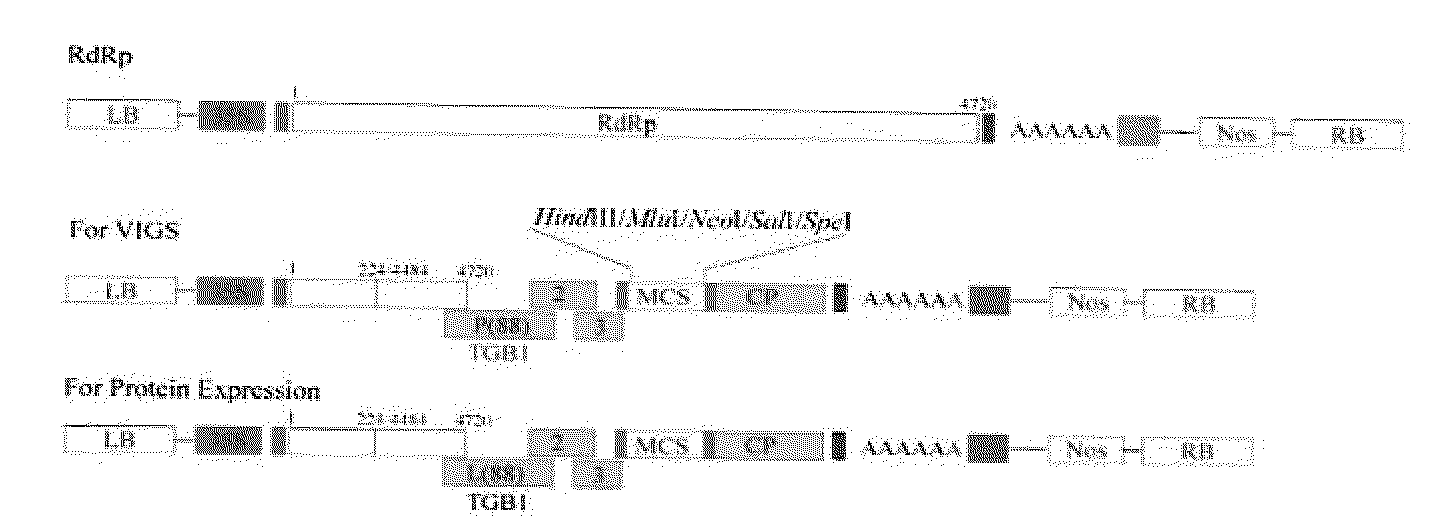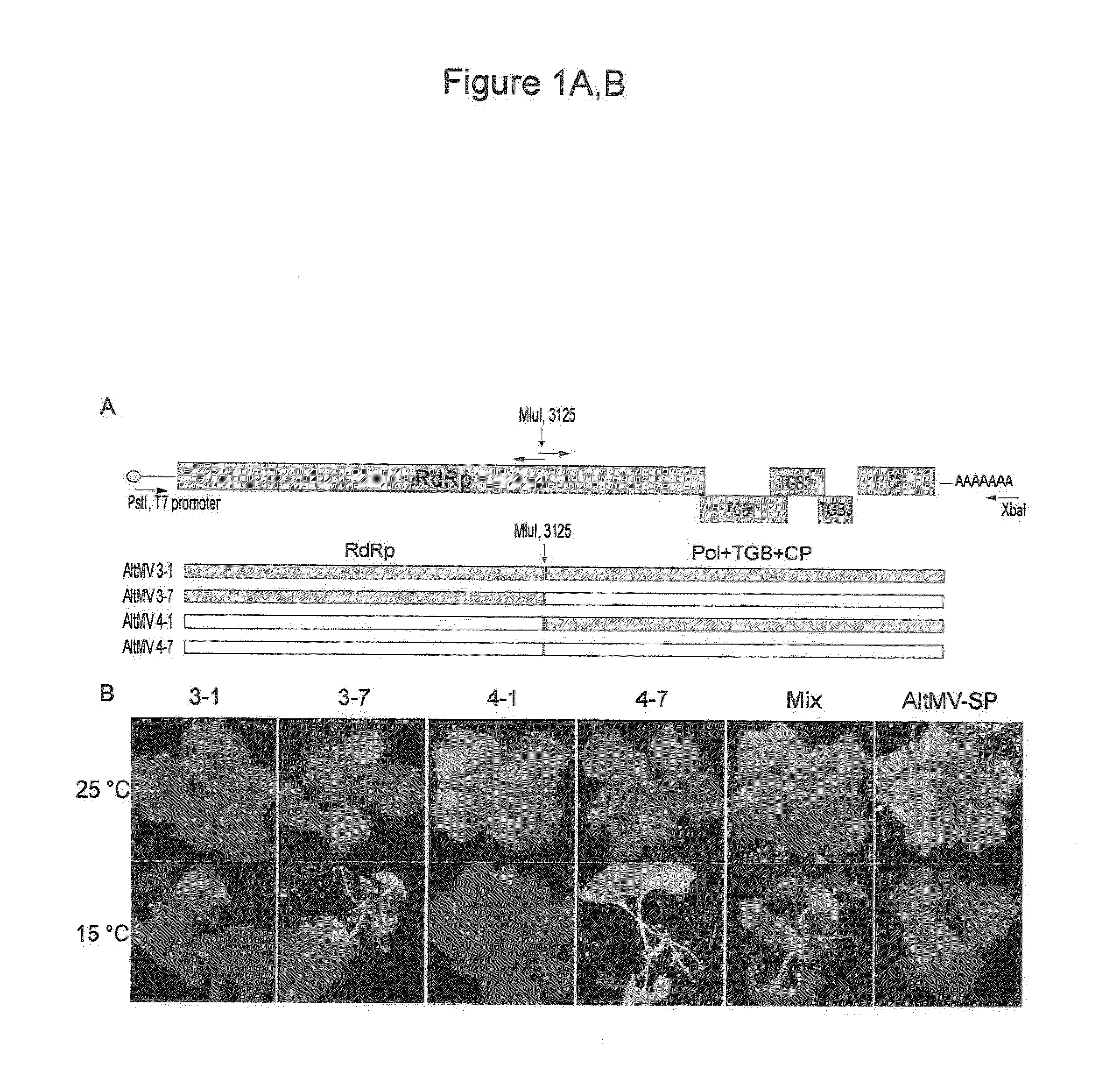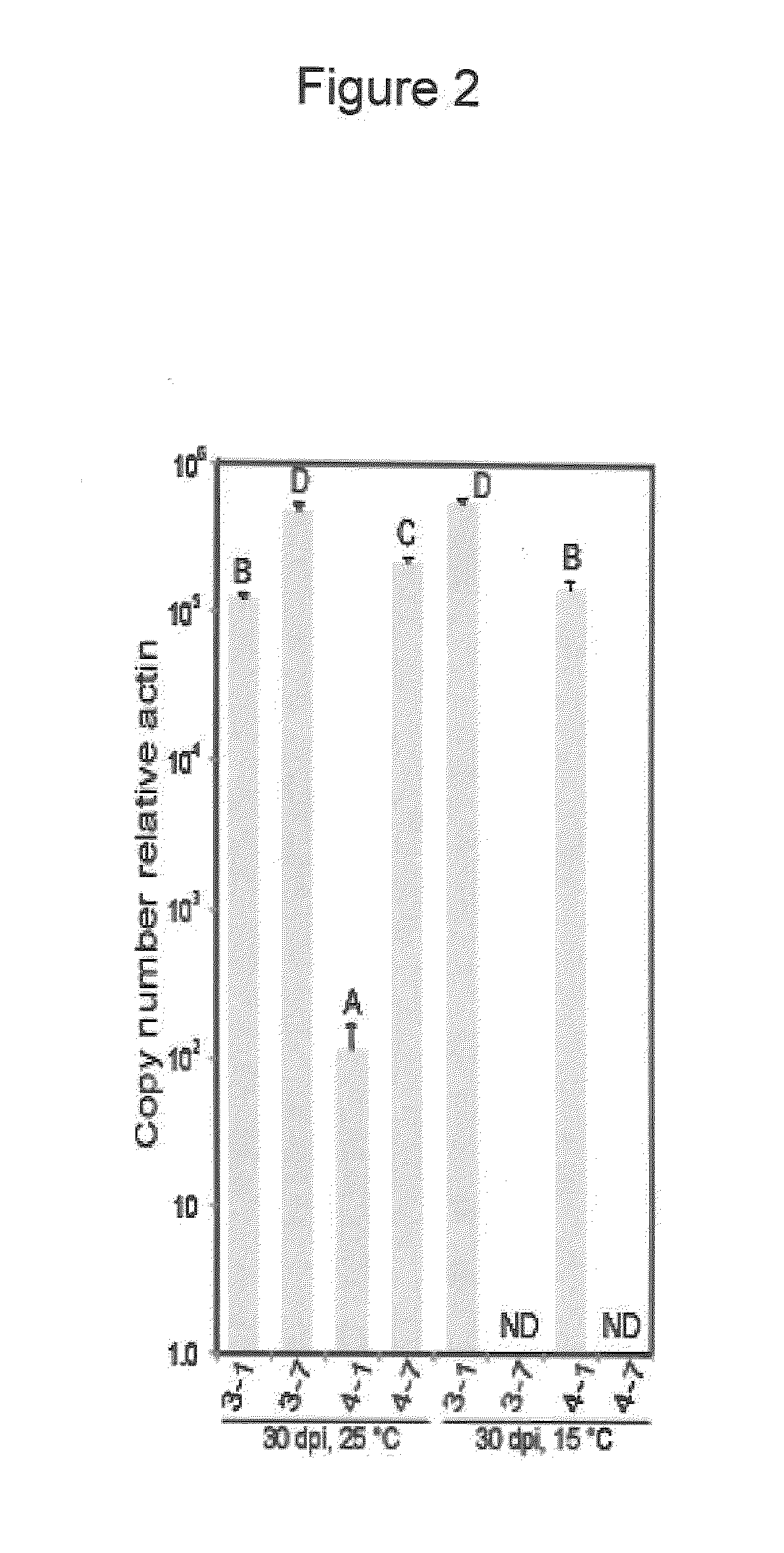Infectious Plant Viral Vector and An Artificial Bipartite Plant Viral Vector An Infectious Plant Viral Vector and An Artificial Bipartite Plant Viral Vector
a plant viral vector and plant virus technology, applied in the direction of ssrna viruses positive-sense, viruses/bacteriophages, biochemistry apparatus and processes, etc., can solve the problems of affecting the effect of agroinfiltration, so as to achieve effective virus-induced gene silencing and high protein expression
- Summary
- Abstract
- Description
- Claims
- Application Information
AI Technical Summary
Benefits of technology
Problems solved by technology
Method used
Image
Examples
example 1
Plant Material
[0149]Seed of N. benthamiana were sown in 10 cm pots and grown either in a greenhouse, or in plant growth chambers at 22° C. with a 16 h / 8 h light / dark regime. Three- to four-week old N. benthamiana plants were used for virus infection and agroinfiltration. Alternanthera dentate ‘Purple Knight’ was raised from seed and propagated by cuttings. For temperature treatments, inoculated plants were grown in greenhouses maintained at 15° C. and 25° C. under a 14 h light regime.
example 2
Virus Isolates
Construction of AltMV Infectious Clones
[0150]AltMV-SP was isolated from Phlox stolonifera cv. Sherwood Purple by mechanical transmission to N. benthamiana, and serially passaged in this host over several years; AltMV-Po was isolated from Portulaca grandiflora and maintained in N. benthamiana (Hammond et al. 2006a,b, supra). Tissue of N. benthamiana infected with AltMV-SP and stored frozen at −70° C. from various timepoints (serial passages) was used to re-initiate the culture; total RNA was isolated from leaves of N. benthamiana using the RNeasy Mini Kit (Qiagen, Valencia, Calif.). Two micrograms of total RNA were used to generate cDNA using SuperScript III RNase H-Reverse Transcriptase (Invitrogen, Carlsbad, Calif.) separately with an oligo (dT)20 primer and an internal reverse primer (MluI-R) containing an Mlu I site that is unique in the sequence of AltMV-PA (Hammond et al. 2006a, supra) at nt3125. Two cDNAs were amplified by a) a 5′ non coding region primer includi...
example 3
Substitution of Pol and TGB1 in Chimeric AltMV Clones
[0151]3′ region TOPO clones 1 and 7 were used for preparation of chimeric vectors. The Pol domain of mild symptom 3′ region clone 1 was digested with Mlu I (at nt3125) and Bam HI (at nt4484) and the Pol domain exchanged with the Mlu I / Bam HI Pol fragment of severe symptom clone 7. To replace both the Pol and TGB1 domains, clone 1 was digested with Mlu I (nt3125) and Xma I (nt5480) and this fragment replaced with the clone 7 Mlu I / Xma I Pol+TGB1 fragment. The Clone 1 TGB1 fragment was substituted by the clone 7 TGB1 fragment using the Bam HI / Xma I fragment of clone 7, and the TGB1 fragment of clone 7 similarly substituted by the Bam HI / Xma I fragment of clone 1. Because the Bam HI / Xma I fragment also included the P(1535)S difference between clones 1 and 7, P(1535) was altered to S(1535) so that the differences due to TGB1 residue 88 could be evaluated independently. Overlap PCR (Wurch et al. 1998. Biotech. Techniques 12: 653-657) w...
PUM
| Property | Measurement | Unit |
|---|---|---|
| Temperature | aaaaa | aaaaa |
| Fraction | aaaaa | aaaaa |
| Electrical conductance | aaaaa | aaaaa |
Abstract
Description
Claims
Application Information
 Login to View More
Login to View More - R&D
- Intellectual Property
- Life Sciences
- Materials
- Tech Scout
- Unparalleled Data Quality
- Higher Quality Content
- 60% Fewer Hallucinations
Browse by: Latest US Patents, China's latest patents, Technical Efficacy Thesaurus, Application Domain, Technology Topic, Popular Technical Reports.
© 2025 PatSnap. All rights reserved.Legal|Privacy policy|Modern Slavery Act Transparency Statement|Sitemap|About US| Contact US: help@patsnap.com



